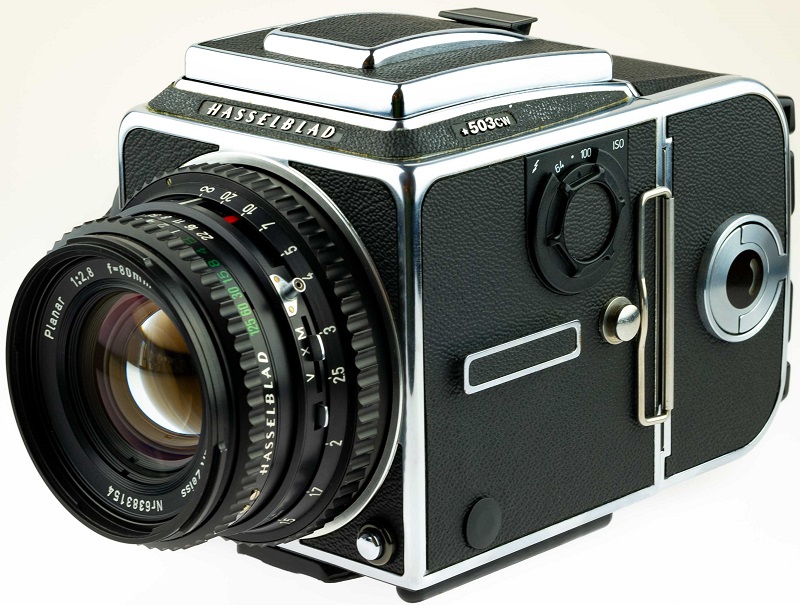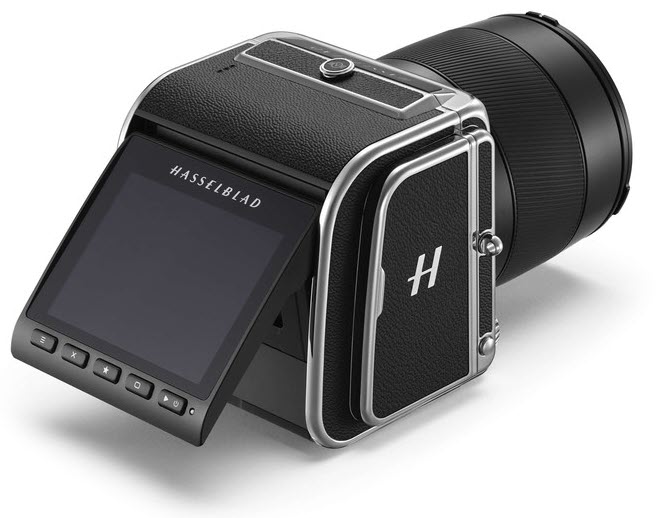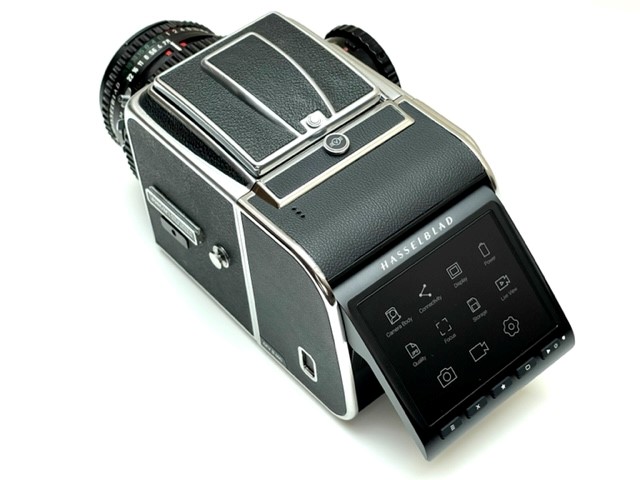HASSELBLAD 907X and CFV II 50C as digital back for HASSELBLAD V cameras (SWC, 500 and 200 series)
HASSELBLAD 503CX
That is my HASSELBLAD 503CX, about which I have already reported here.
On the film rolls I use, I only have 12 shots and only know after I get the developed film back whether the photos turned out anything.
Until now, the digital backs for the 500 cameras were only available for over € 15,000 - too expensive for me.
But then HASSELBLAD released a camera with a digital back that solves this problem for half the price:


HASSELBLAD 907X
and the Digital Back CFV II 50C
This is the digital HASSELBLAD 907X with the Digital Back CFV II 50C. The digital back of this camera can be used 1:1 on all Hasselblad cameras manufactured between 1947 and 2013 - including my HASSELBLAD 903SWC, 503CX and 500CM cameras.
HASSELBLAD made many changes between 1947 and 2013 for the V series, both in the cameras and in the film backs. Nevertheless, all cameras and all film backs are compatible with each other - and also the digital film back we are talking about here - the CFV II 50C.
If you want to read about this in more detail, you can do so on the website of Ken Rockwell and Wikipedia.
HASSELBLAD 500CM
with Digital Back
This is now my analog Hasselblad 503CX in the front and the Digital Back CFV II 50C from my Hasselblad 907X camera in the back.


DIGITAL AND ANALOG
On the left is the Digital Back CFV II 50C and on the right the Film Back A12.
Here you can see that not all medium formats are the same. The Digital Back CFV II 50C has the dimensions 43.8 x 32.9 mm, while the analog Filmback A12 has 56 x 56 mm.
You can't compare pixels 1:1 with film, but the resolution of the old analog Hasselblad with its 6x6 format is higher than that of the digital back.
You can see this at first glance when you compare the two "sensor surfaces".
The Clou . . .
Now I can shoot at my leisure with the digital back until I'm satisfied with the result - and then exchange the digital back for my analog film back and take the photo with the same settings.
The same settings? Not quite. Digital sensors allow you to bring out a lot of detail from dark areas, while it's the other way around with film - where you can better salvage the areas that are too bright. So this means: open the exposure setting for shooting with film one aperture further than with digital back.
Of course, this only works for landscape and architectural photography, but with some restrictions also for portraits, i.e. for still or at least still subjects.
Tutorial & Tips & Tricks
Hasselblad cameras do not have a shutter - the shutter is always in the lens (leaf shutter). Since the Hasselblad is an SLR camera, you have to make sure that the mirror flips up and the shutter stays open to allow the sensor on the digital back to see through and thus display the image on the rear screen.
To achieve this, you have to set the BULB mode (see green B on the right side of the picture) on the lens and on the other hand . . .


. . . hold down the shutter release.
With my HASSELBLAD 500CX, you have to attach a remote shutter release and then lock it pressed down.
In the settings on the digital back you have to switch to electronic shutter.
HASSELBLAD 500 CM
With the HASSELBLAD 500 CM, you don't need a remote release - it has a locking lever on the shutter release (see lever with red dot in the head).
This is of course much more practical than a long remote shutter release, which then always dangles from the camera and is constantly in the way.
Other models from the 500 series of HASSELBLAD also have this locking lever, you should pay attention to this if you buy a 500 to operate it with the Digital Back CFV II 50C.
Of course, it is also possible to operate the camera normally - as with the film back. In this case, however, only the viewfinder of the camera is available, the screen of the digital back then remains covered behind the mirror and shows neither an image nor the exposure settings. That would be too inconvenient for me - I prefer to take pictures with the screen of the digital back, as described above.

Art of Photography
Here is another nice video about the HASSELBLAD 907X, the Digital Back CFV II 50C, and the possibility to use this Digiback with HASSELBLAD 500 series cameras:
Hugh Brownstone
An entertaining video about the HASSELBLAD 907X. As with Hugh always also with historical and personal details that other YouTuber so not offer:
